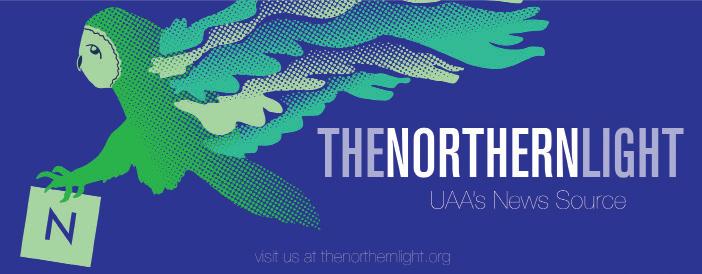






By Jake Dye editor@thenorthernlight.org
It was election day on Aug. 16! Alaskans came out to the polls to vote both on an open primary and on the special election to name a new Representative to fulfill the term of the late Don Young. The special election was also the first use of the new ranked-choice voting system, implemented after passing as a ballot measure in 2020.
As part of ranked choice voting, candidates are ranked in order of each voter’s first choice, second choice, third choice and so on. When all of the votes are tallied, the person with the fewest first-choice votes will be eliminated. Everyone who voted for that person will have their second choice votes distributed, and the process will be repeated until one candidate has more than 50% of the votes. Voters who only rank one candidate will have their ballot exhausted if that candidate is eliminated, as they will have no second choice option to be allocated.
The open format of the primary election is also a new addition, part of the 2020 ballot measure. Though the ranked choice method of voting is not used for primaries, this meant that every candidate for each position was listed on the ballot, regardless of party affiliation and the four candidates with the most votes will move on to the general election later in the year.
On the ballot were primaries for United States Senator, U.S. Representative, Governor/Lieutenant Governor, and State Senate and House seats. The ranked choice special election for the U.S. House was on the back of the same ballot.
Preliminary results last updated at 4 p.m. Aug. 17 by the Alaska Division of Elections have Lisa Murkowski in first place in the primary for U.S. Senate with 44% of the vote. Trailing her by around 6,000 votes is Trump-endorsed Kelly Tshibaka, at 40%. In third place is Patricia Chesbro, who received an endorsement from the Alaska Democratic Party and
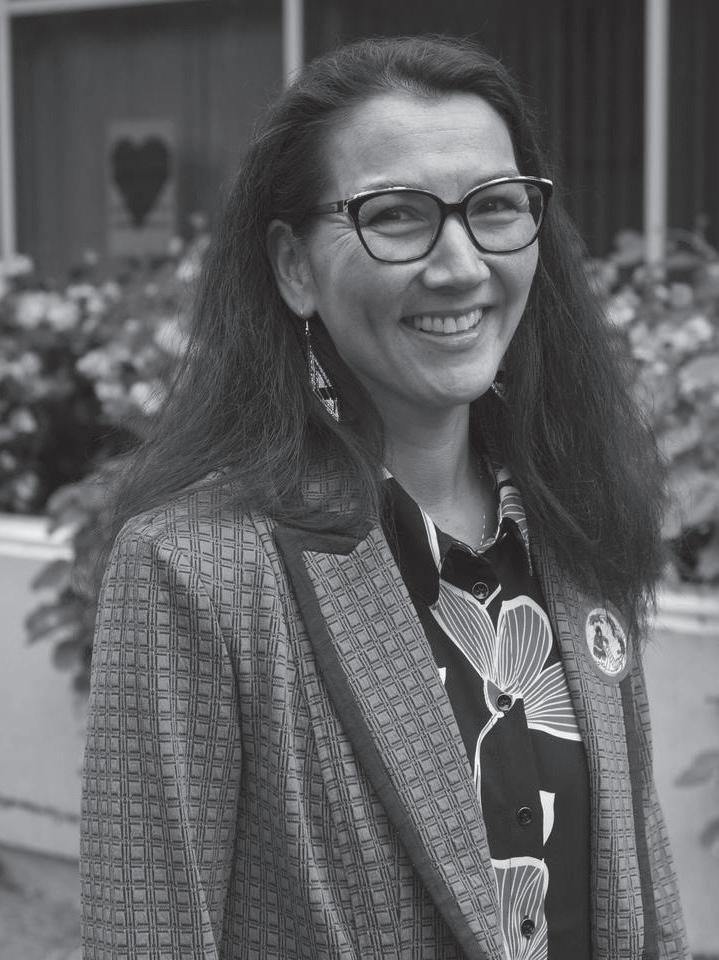
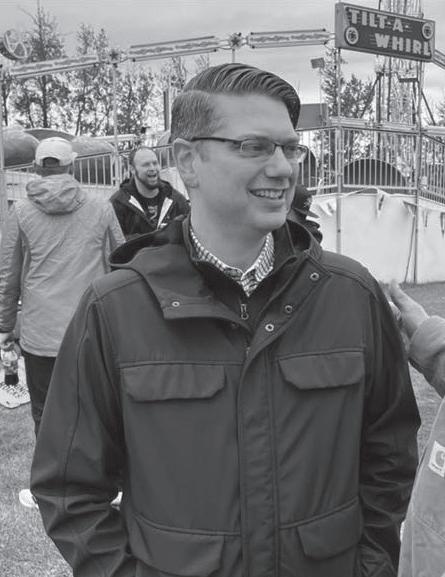

received 6% of the vote. Rounding out the top four is far-right candidate Buzz Kelley with 2%.
Because of the special election, The U.S. House of Representatives seat was on the ballot twice, both to choose the candidates who will vie for the 2023-2024 seat on the ballot in November, as well as to choose the candidate who will serve out the remainder of Young’s term.
Each of the candidates who were listed on the special election were also listed on the primary, meaning some of the same names appeared in two different races, on opposite sides of the ballot.
For the primary for U.S. Representative, preliminary results show Democratic candidate Mary Peltola in the lead with 35% of the vote. Behind Pelw-

the ballot because the fourth –Dr. Al Gross – dropped out. Absentee ballots postmarked by Aug. 16 can still be received until two weeks after election day, so the ranked choice process – in which candidates are eliminated and votes redistributed – will not happen until that deadline has expired. Certification of results is set for Sept. 2. At this time, preliminary results for the special election suggest that Begich will be eliminated. In that possible outcome, if enough of his supporters chose fellow republican Palin as their second choice, she could very well end up securing the win. Conversely, if his supporters ranked Peltola second or left their second and third choices empty, then Peltola may be the one in Washington D.C. next month.
For Governor, incumbent Mike Dunleavy is holding 42% of the vote in preliminary results. Nearly tied in second and third place are former Governor Bill Walker and Democratic candidate Les Gara. They each have 22% and are separated only by 300 votes. It appears that the fourth spot will be filled by Charlie Pierce, who has 7% and currently serves as Borough Mayor of the Kenai Peninsula. For the state legislature, primaries were held for 19 seats in the State Senate and all 40 seats in the State House. Of these, only one race had more than four candidates. This means, aside from that one exception, no one was eliminated in the primaries and everyone will reappear on the ballot in November.
Though it may seem low stakes, it is a unique insight for candidates and voters alike to see how candidates are faring against each other, only a few short months before the general election.
tola are former Governor Sarah Palin with 31% and Nick Begich III with 27%. Tara Sweeney is in the fourth spot, but only has around 4% of the vote.
Those results largely align with the preliminary results of the ranked choice special election. Peltola leads there with 38% at the time of writing. Palin has 32% and Begich claims 29%. Only the three candidates are on
Like the special ranked election, these results will not be certified until Sept. 2. At this point, the majority of ballots have been received and there is less opportunity for things to shift in a big way without the impact of ranked choice allocations. At the time of writing, 395 of 402 precincts have reported their vote tallies.
Full preliminary results can be found at elections.alaska.gov/ election-results/
Reach reporter Jake Dye at editor@thenorthernlight.com
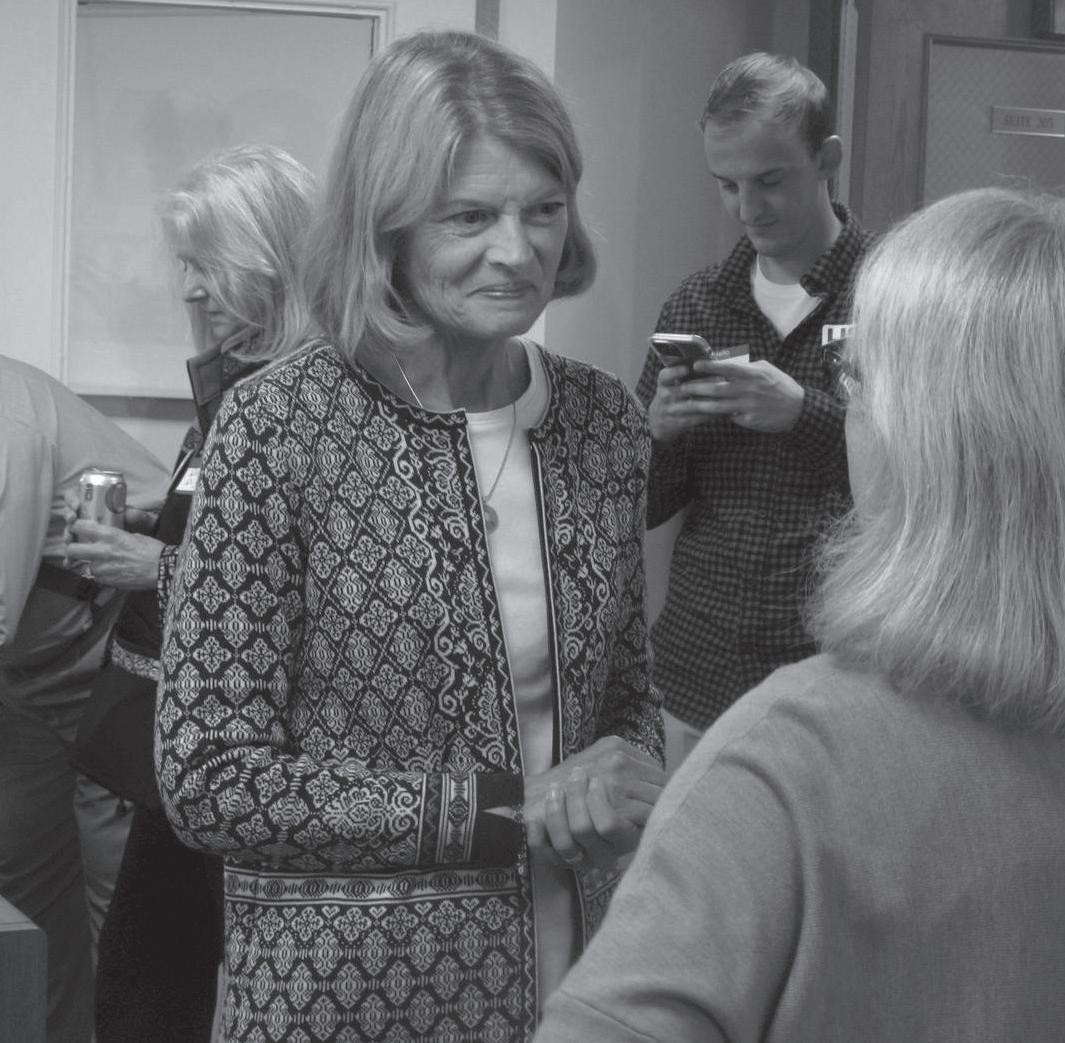
By Matthew Schmitz news2@thenorthernlight.org
It’s been a busy summer here at UAA. Here’s a breakdown of some of the big developments that happened over the break. The Northern Light covered many of these stories, and more in-depth coverage can be found on our website, www. thenorthernlight.org.
Construction
There were two major construction projects this summer that will catch people’s eye. The 50th anniversary flower bed on Seawolf Drive in front of Rasmuson Hall received a redesign. The wooden bed was replaced with concrete forms. Also, inside Rasmuson Hall, a stock-ticker-tape marquee was installed that wraps around the opening in the ceiling of the first floor.
Sports
The Women’s Gymnastics team was able to achieve reinstatement after two years of fundraising. To hit their nearly $1 million goal the team hosted pledge drives, reached out on social media and engaged with university leadership by calling into town halls and showing up at public meetings. In addition to all that, they were also able to achieve the second-best GPA in the nation for a women’s gymnastics team!
Events and Politics
Perhaps one of the biggest events of the summer was former President Donald Trump’s political rally at the Alaska Airlines Center to support Sarah Palin and Kelly Tshibaka. Thousands gathered from around the state to see the president and the event drew criticism from members of the UAA community.
Since the pandemic began, the University of Alaska Board of Regents held their first in person meeting on June 2-3 at the Gorsuch Commons. The big news coming out of the meeting was the board’s acceptance of the budget passed by the state legislature, which included specific funding for research related to the state’s economic development, such as mariculture, drones and heavy oil recovery.
Members of the full-time faculty union, United Academics, also showed up at the meeting to demonstrate and show support for the union.
The Alaska state legislature passed, and the governor signed into law, protection of the higher education investment fund. The long-term stability of the Alaska Performance Scholarship, Alaska Education Grant and WWAMI – all provided for by the HEIF – were thrown into question after a rule change caused the fund to be drained of its money. The leg-

islation also recapitalized the fund with over $300 million.
Arts and Entertainment
Pat Borjon, CRM system administrator with UAA’s admissions, put on a novel art exhibit called “C” in the High McPeck Gallery from June 16 to July 14. His artwork consisted of 2-dimensional paintings and interactive digital displays that used motion sensors to track body movement. He was able to combine art and technology to tackle tough themes such as digital surveillance, living with AI, commercialism and raising children in such a world.
After putting their operations on hold because of the pandemic, The Planetarium and Visualization Theater started shows in the theater again this summer. Located in the ConocoPhillips Integrated Science Building, UAA’s planetarium is the largest in the state of Alaska.
Students and other members of the UAA community had the opportunity to enjoy live music and lunch from food trucks at this year’s UAA Concert in the Quad series.
After 30 years of service at UAA, Vice Chancellor of Student Affairs Bruce Shultz retired. Originally from Wisconsin, Schultz earned a Master of Education from Ball State and came up to Alaska in the early 90s to work as an intern at UAA. Sensing an opportunity to help build something from the ground up, he stayed on at UAA and worked his way up through the university. He briefly served as interim Chancellor of the UAA before UA President Pat Pitney named Sean Parnell to the position.

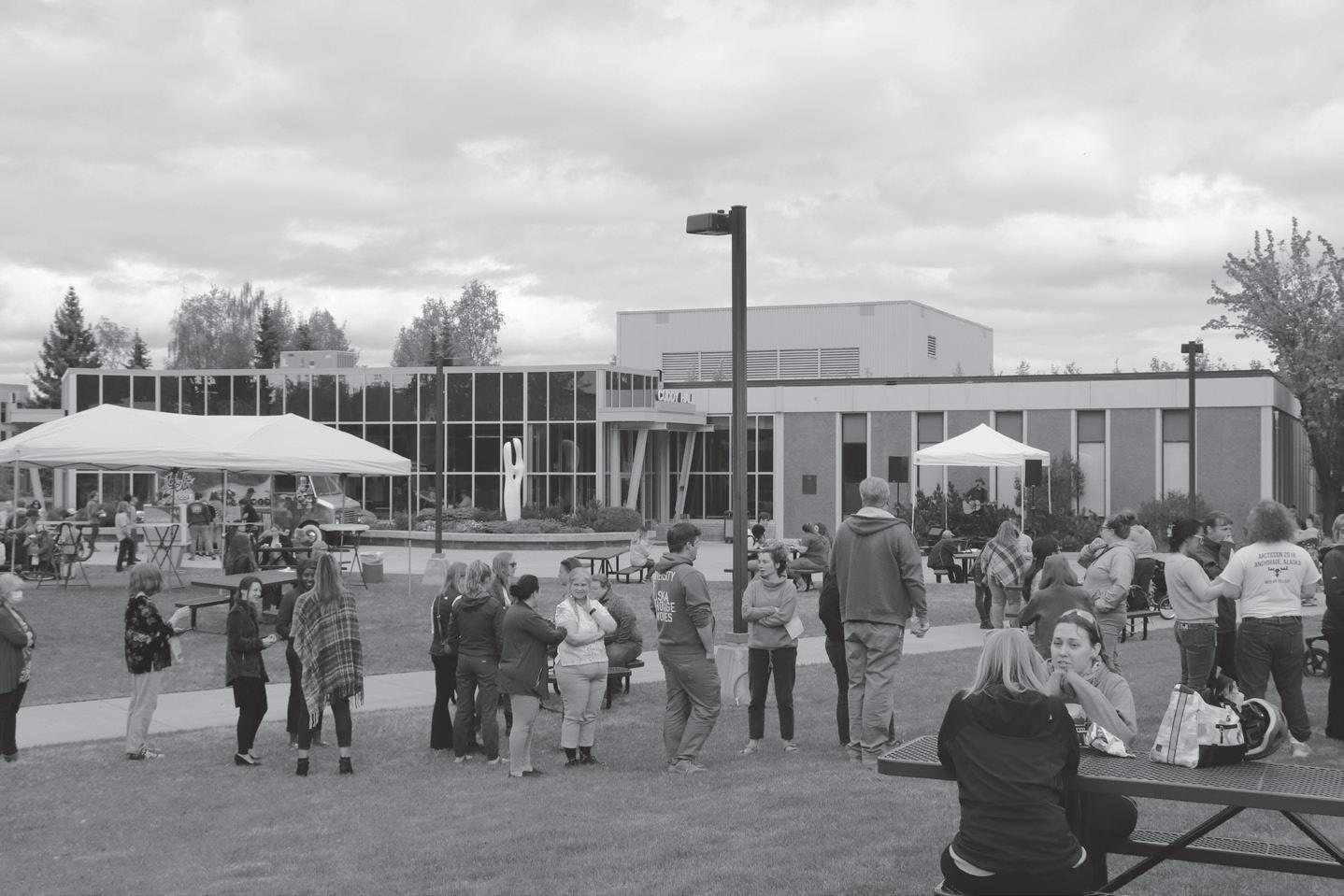
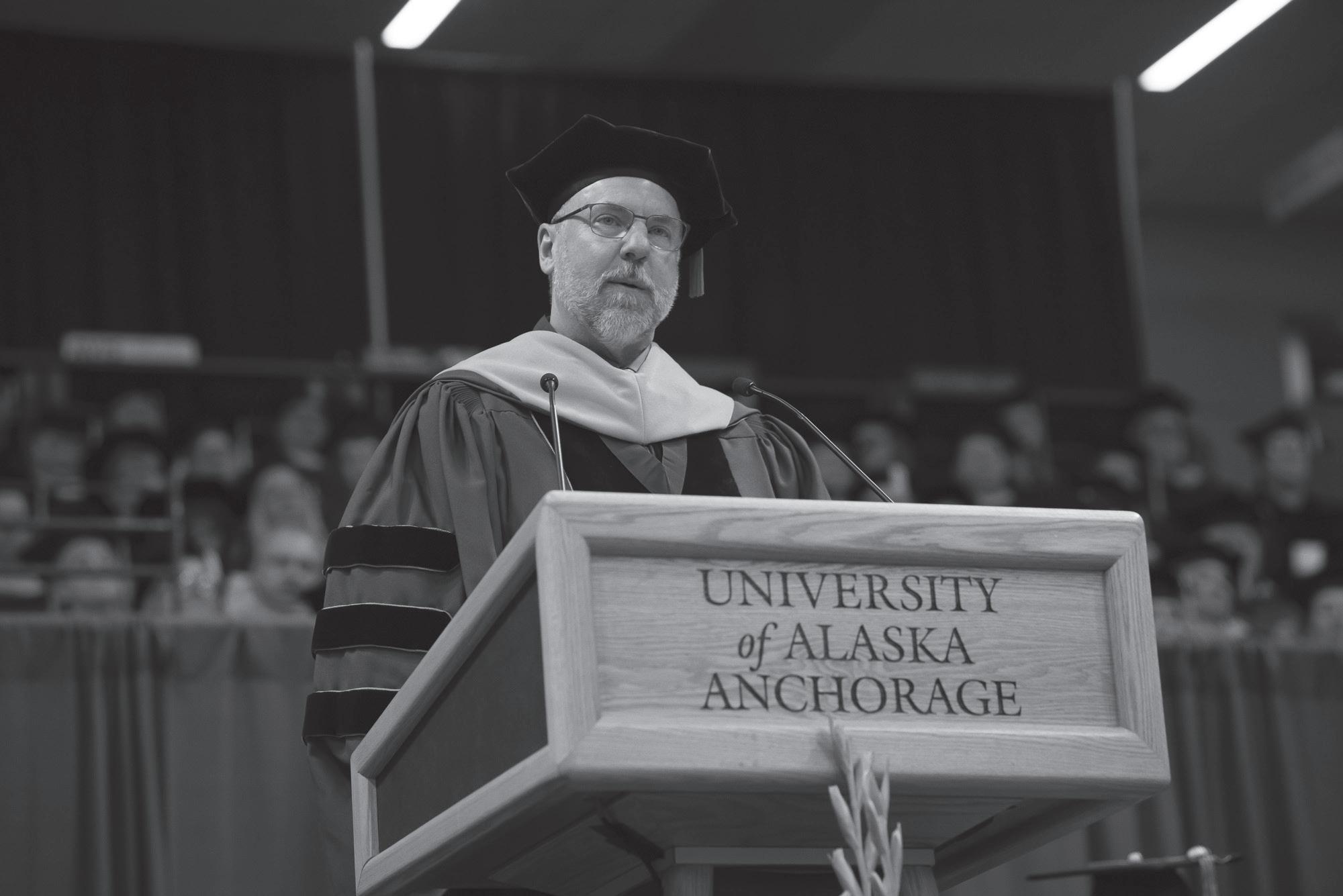
Stepping in to fill the role of Vice Chancellor of Student Affairs is Deanne Woodard. According to her biography on UA’s website, she has over 15 years of experience in higher education. Previously she has served at Kansas State University and Mesa Community College. She has been working at UAA since May of 2021 as associate vice provost, overseeing programs such as the Learning Commons, Summer Bridge and TRIO. UAA alumnus Ryan Buchholdt was appointed to the vice chancellor of administrative services, according to an announcement in the Green and Gold. Buchholdt has worked in various administrative positions with the university over the past ten years. In an interview with Chancellor Parnell, Butchholdt said, “my vision for the division is for us to be synonymous with student success.”
Ryan Smartwood was named athletic director, and Ryan Orton was made the associate head coach of Men’s Basketball.

By Matthew Schmitz news2@thenorthernlight.org
After a deadlock this summer, progress is being made in the contentious negotiations for a new collective bargaining agreement between the University of Alaska and the full-time-faculty union, United Academics, according to a statement issued by UA President Pat Pitney on Aug. 1.
A proposal submitted by UA to United Academics on July 11 included a 3%, 2.75% and 2.5% increase to base pay for full-time faculty over the next three years and a 6% increase to the starting pay of new faculty.
That is up from what UA had called their “best and final offer,” which had 3%, 2.5% and 2% over the next three years and a 3% increase for new-faculty base pay.
The counteroffer sent to UA by United Academics on July 28 largely accepted the monetary terms though there are still 8 articles to be agreed upon. An opinion piece in the Anchorage Daily News, signed by 24 faculty members from the university system, also confirms that the compensation question is mostly settled.
The issue of compensation was one of the biggest sticking points in the longdrawn-out negotiations, which began nearly a year ago.
The previous CBA – which remains in effect until a new agreement is reached –was negotiated in 2016. As previously reported by The Northern Light, full-time faculty have only had a 1% wage increase since then.

The current negotiations have seen each side making accusations against the other, such as UA saying that United Academics has been responsible for the slow progress, and United Academics accusing UA of negotiating in bad faith.
The talks came to a head earlier this
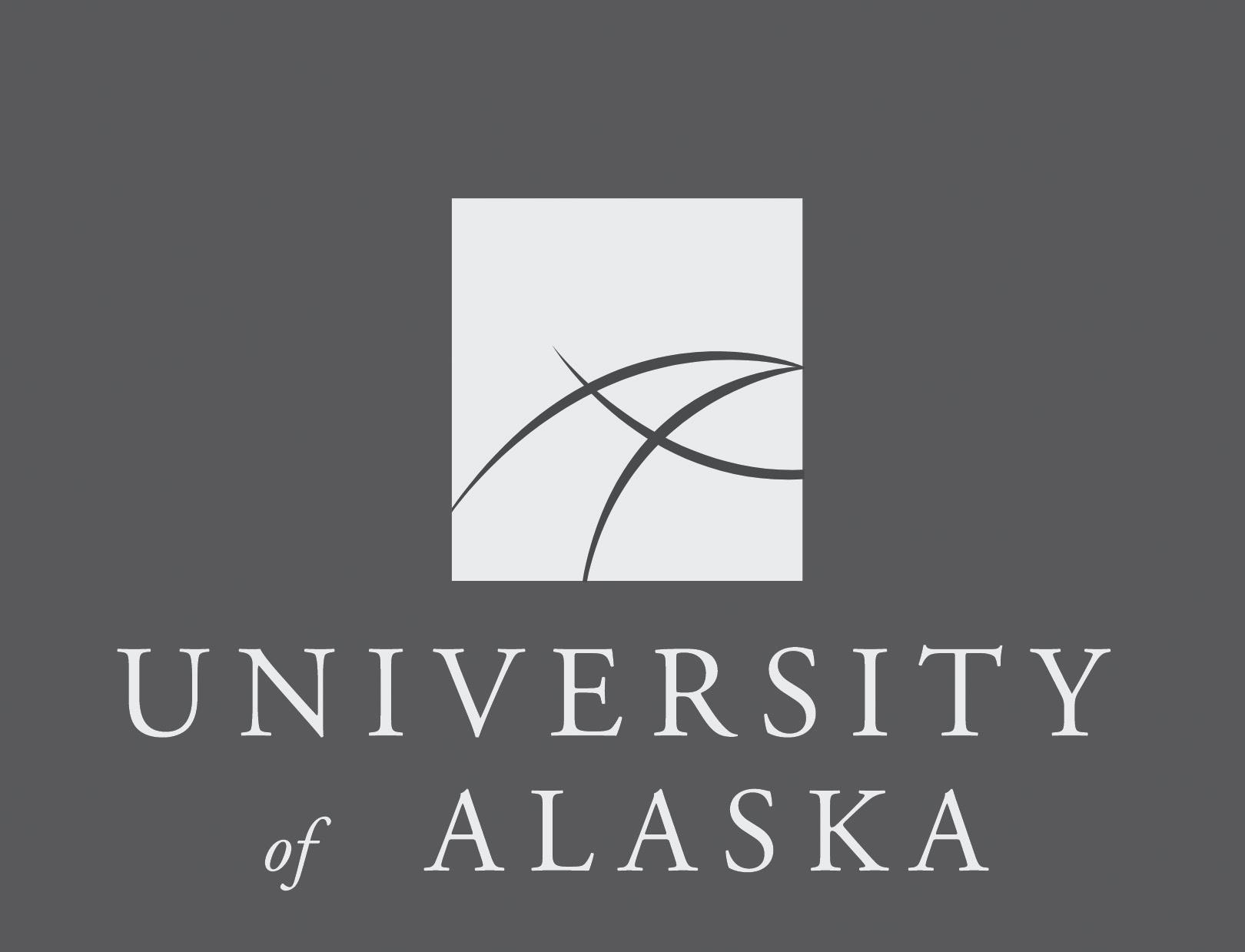
summer when UA made its “best and final offer” to United Academics on April 25.
After United Academics rejected the offer, UA unilaterally declared the negotiations at an impasse and moved to implement their proposal, submitting it to the state legislature to be voted upon. The legislature did not take it up, which means that full-time faculty will not see any pay increases this year.
According to a newsletter published by United Academics, the union believes UA acted illegally in declaring an impasse and this contributed to the legislature not voting on UA’s best and final offer.
The newsletter cites Nicole Thibodeau, Alaska labor relations agency administrator/hearing examiner, who was quoted by the Alaska Beacon as writing “to be at a valid impasse the parties must either agree that they are at impasse or the Alaska Labor Relations Agency must make a determination that they are.”
According to a FAQ published by UA that pushes back against this, “state law applicable to the university does not require either agreement by the parties or a finding by a mediator or the Alaska Labor Relations Agency that the parties are at impasse.”
Professor Tony Rickard, who was lead
negotiator for United Academics, wrote in an email to The Northern Light that Alaska state statute also requires any contract voted upon by the legislature to be agreed to by both parties.
Rickard wrote, “While [United Academics] hopes to reach an agreement with UA, [United Academics] is prepared to file [unfair labor practices] and/or move toward a strike vote of our membership and, subsequently, a possible strike.” And he described a contract agreement as an “off-ramp” to avoid the alternative of the union striking or filing an unfair labor practice suit.
He also wrote that a strike would place a burden on students, faculty and UA, and that it is something the union would like to avoid.
The president of United Academics, Professor Abel Bult-Ito, confirmed in a follow up email that the decision of UA to declare an impasse is among the reasons why United Academics is looking at possibly filing an unfair labor practice suit against the University of Alaska.
On August 22, UA is supposed to respond to United Academics’ July-28 proposal. If an agreement is reached between the union and UA, the contract would need to be ratified by the union members and subsequently by the UA Board of Regents.

By Matthew Schmitz news2@thenorthernlight.org
Text On Aug. 18, UAA’s College of Business and Public Policy hosted their Showcase event in Rasmuson Hall.
Tickets were open to the public, and from 5 to 7:30 p.m. guests had the opportunity to meet with researchers from the Institute of Social and Economic Research, learn about education programs in the CBPP, and network with the college’s professors and leadership.
According to an email from CBPP Associate Dean Terry Nelson, the CBPP met with various clubs and business organizations to promote the event, and reached out via social media and personal connections as well.
Nelson wrote that, including volunteers and presenters, there were over 400 people confirmed to attend.
The CBPP is accredited by the AACSB, and Nelson wrote that the Showcase helped to fulfill the organization’s societal-impact accreditation requirement.
The AACSB accreditation is held by only 5% of the world’s colleges, she added.
The new Seawolf Stock Ticker in Rasmuson Hall also got its official launch at the CBPP Showcase.
CBPP Dean John Nofsinger, who came up with the idea, led the countdown to inaugurate the ticker marquee – which wraps around the opening in the 2nd floor of the hall – and Chancellor Sean Parnell marked the moment by ringing a commemorative bell – in the same way the opening bell is rung in the New York Stock Exchange.
The ticker shows up-to-date prices of the 30 stocks that make up the Dow Jones Industrial Average. Nofsinger said ticker can also show sports scores and important information for UAA students. Donations from First National Bank Alaska helped to pay for it.
There were hors d’oeuvres catered by Wild Fork,which included Little Smokies in puff pastry, bruschetta crostini and Swedish meatballs. In addition to that were several wines for wine tasting. Attendees could have seven ounces, and the
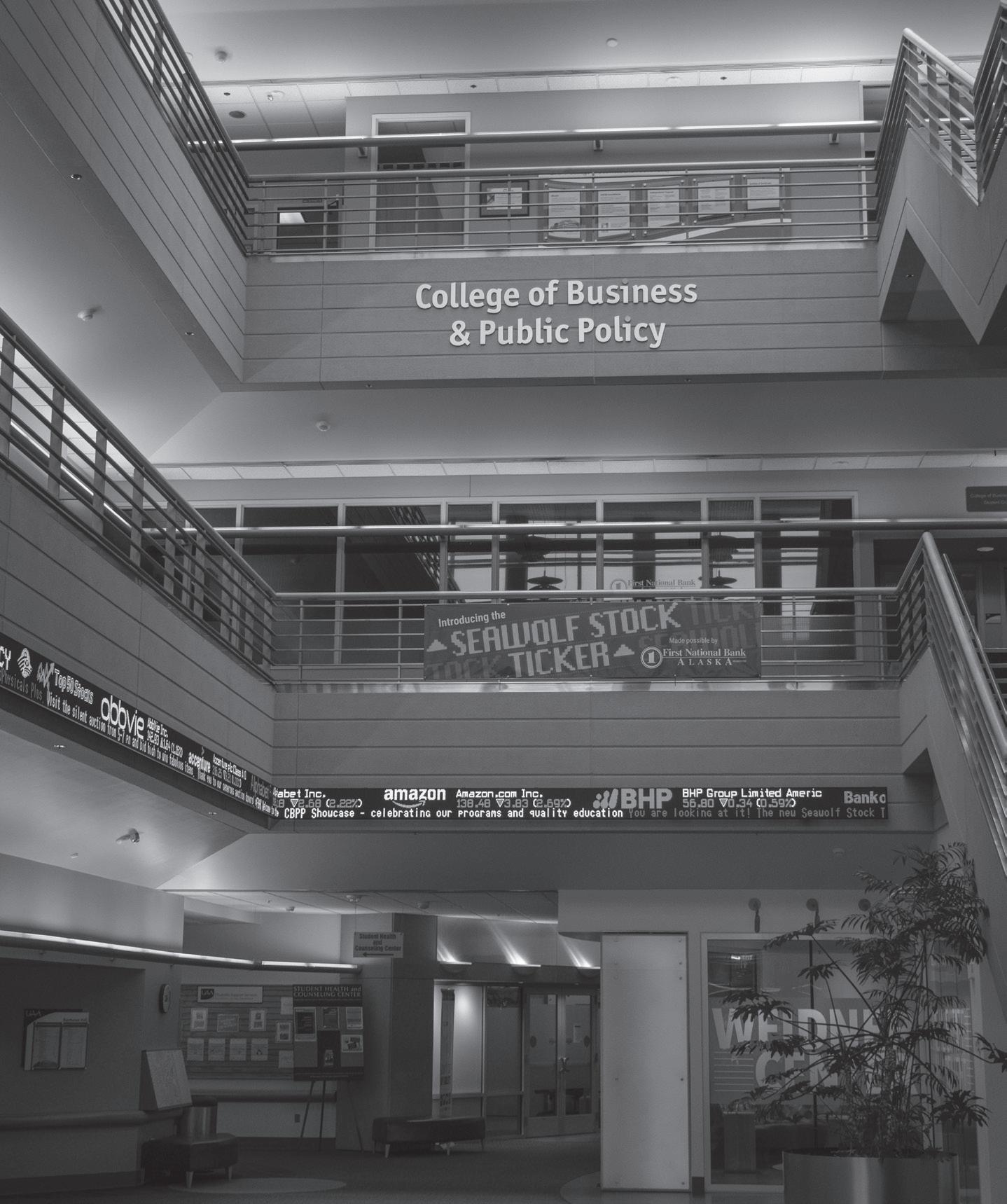
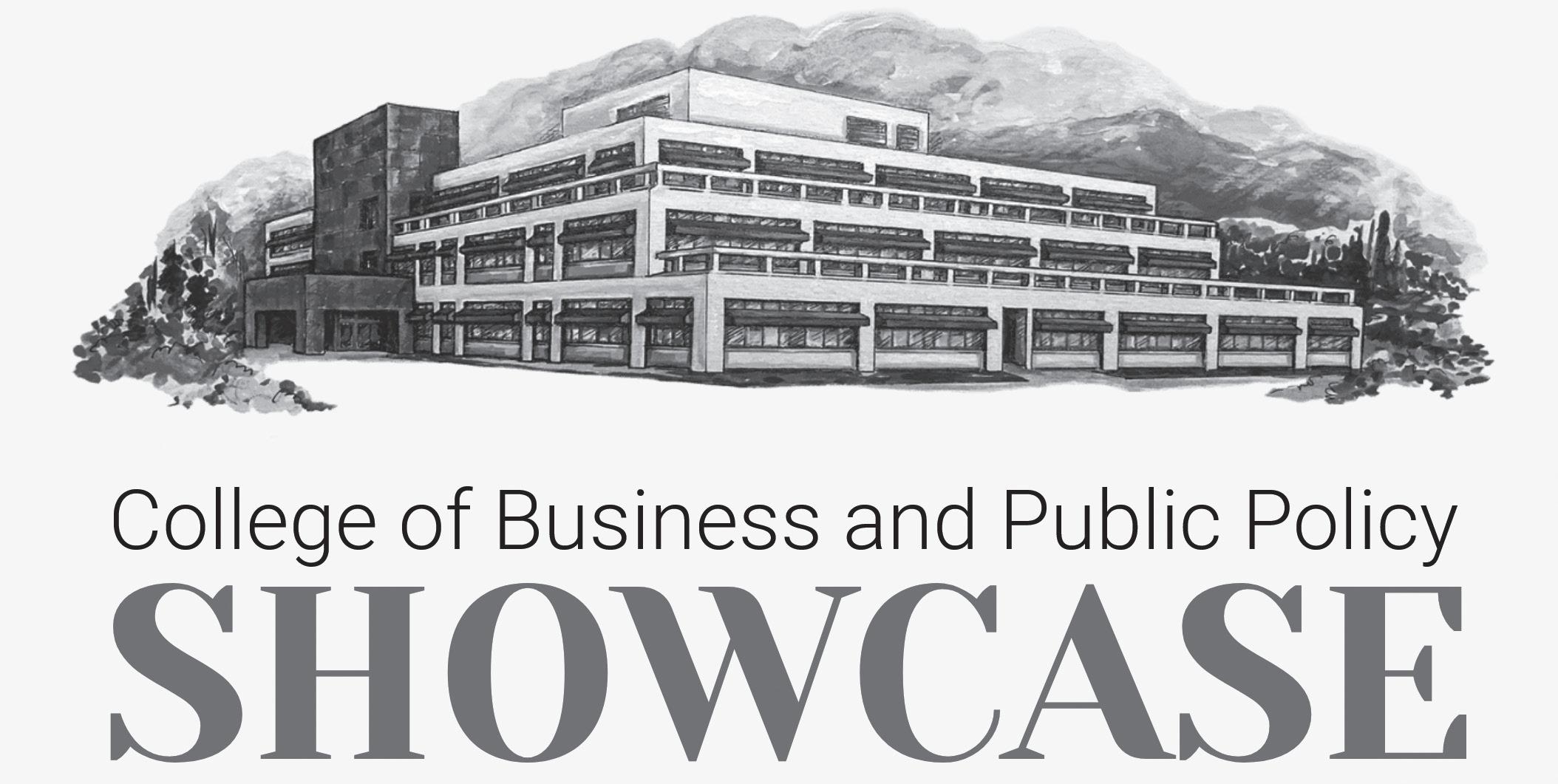
amount was tracked by marking their entrance wristbands.
UAA’s mascot Spirit was present to take photographs with participants, and Mischa Shimek, a classical guitarist and graduate of the CAS, provided music for the evening. Attendees also had the opportunity to bid on several different items in a silent auction, such as Alaska Airlines tickets, a dinner with Chancellor Sean Parnell or a tour of the Port of Alaska.
According to the CBPP’s website, proceeds from the auction would go to support scholarships and programs in the CBPP.
The evening was split into three different sessions where guests broke off into small groups and presenters gave talks in the various rooms of Rasmuson on the programs and work of the CBPP.
Some topics included information on the CBPP’s occupational educational certificate in cyber security, demonstrations in the Alaska Data Science and Artificial Intelligence Lab, and an opportunity to play a market trading game used to teach UAA students about supply and demand.
One of the options available at all three sessions was a chance to meet and speak with researchers at the ISER, which is under the CBPP. Associate Professor Jen Schmidt talked about the online map they developed that shows wildfire risk for the Anchorage and MatSu areas.
Also, ISER’s Bob Loeffler had a scale with blocks used to educate students on the state’s budget and how it’s balanced. The blocks were marked with different colors that represented a different form of income or spending.
During the second session, Associate Professor Soren Orley, Pat Berry and Brandon Clark gave a presentation on fraud and UAA’s Justice for Fraud Victims Project, where students can work on a real fraud case for smaller organi-
zations that normally wouldn’t be able to afford an investigation.
According to the presentation the project has identified around $3.5 million in suspected fraud since it began ten years ago. They also talked about the profile of a typical fraudster which included such traits as a type-A personality, being a woman and no prior criminal background.
The event also offered a good opportunity for participants to network. In the third session, Professor Amy Green – the only professor teaching courses on hospitality – gave a talk about the university’s hospitality program. In attendance were members of Alaska CHARR, a group that educates and advocates on behalf of the hospitality industry in Alaska. Sarah Oates, CEO and president of Alaska CHARR, introduced herself to Green and expressed an interest in collaborating with her in the future.
Nelson wrote that the idea for the Showcase came to her after attending the Palmer Museum’s Sip & Shop, their most successful fundraiser.
The AACSB accreditation required the CBPP to identify their societal-impact focus – which was found to be a quality education – and she wrote, “I thought [the Sip & Shop] would be a concept that we can use to invite the community in to gain knowledge about the great programs that we have and the quality education that the College of Business and Public Policy offers.”
Their goal for the event was 250 people, which they nearly doubled. Regarding if the Showcase will occur annually, Nelson wrote that is yet to be determined though it is a possibility.
Other UAA colleges who helped with the event were the College of Engineering, which partners with CBPP on the AI Lab, and the Community and Technical College Culinary, whose students helped with the wine tasting.

By Matthew Schmitz news2@thenorthernlight.org
Text Moving seats, falling snow from the ceiling, and the wind blowing in your face.
These are just some of the effects that movie goers can experience in the 4DX auditorium at the Regal Tikahtnu theater.
The first auditorium of its kind in Alaska, the newest addition to the Tikahtnu theater uses a variety of physical effects to bring the on-screen action to life.
The 4DX auditorium opened in August. To get a first-hand experience, I went to see the new action movie “Bullet Train,” starring Brad Pitt.
The movie follows several assassins, criminals, and mercenaries who all – apparently coincidentally – end up on the same bullet train making its way from Tokyo to Kyoto. The plot centers a crime lord, his son – who is also on the train – and a briefcase full of gold and money.
Each character has their own agenda that inevitably leads to violent, lethal conflicts. The movie is full of dark, facetious humor and the characters’ personalities often have an ironic twist, such as an anxiety-riddled assassin, who is constantly quoting his therapist, or the mercenary who categorizes people in terms of “Thomas the Tank Engine” characters.
It’s jam-packed with fight
scenes, wild stunts, overthe-top special effects, and it offered a great opportunity to see what the 4DX system was capable of.
Entering the theater, the first thing that stood out was that the auditorium was divided into an upper and lower section. The seats were paired together in groups of four that would all move together.
The seats are reserved so you have to try and find your spot. While the rows are clearly marked, finding the exact seat was a little difficult because the seat numbers are listed as a range on the end of the four-seat group.
Lifted slightly off the ground, there is a stirrup-like footrest attached to the seats to help support your feet. In the armrest were cupholders and a button that let you turn “water on,” or “water off.”
There weren’t any effects during the previews, but they kicked in almost immediately once the movie started.
A common effect was for the seats to pan, tilt and move with the movie camera. Another common feature was for them to jerk violently whenever someone was punched or, at one point, hit by a scooter.
Pressure pads in the seats, like those on a massage chair, also jostled you about when there was some action on-screen.
In the headrest, there were openings that would shoot bursts

of compressed air to the back of your head. Often these were employed in shootouts to simulate someone getting shot.
There were moments in the movie when a character would get wet, and this was simulated via mist clouds that were sprayed from a nozzle in front of you. This is the feature that the “water on/water off” button controls.
Some other effects were wind blowing whenever there were onscreen wind effects, snow falling from the ceiling in a snowing scene and strobe flashes during scenes that involved electricity or gunshots.
One gruesome effect was a “rain” feature that sprinkled water from the ceiling that made its appearance in scenes with copious amounts of blood splatter –the movie is rated R by the way.
While the movement of the seats paired up nicely with the camera movement, helping to create the sense of real motion, like on a theme-park ride, most of the other effects broke the fourth wall and shattered the illusion of the movie experience.
The pneumatic features were especially distracting because of the noise they made. If you’re the type of person who likes to curl up with a bucket of popcorn and get lost in the movie, 4DX probably isn’t for you.
Trying to hold onto the popcorn was also sometimes a challenge and being shaken about with a stomach full of soda and snacks wasn’t exactly pleasant. I would recommend skipping the concessions for these screenings.
There was also some anxiety generated while waiting for the next air blast or jerk from the seats, akin to the feeling of anticipation to a jump scare in horror films, so if that’s something you enjoy then this might be worth checking out.
Normal ticket prices for 4DX are $20.85 for adults and $17.55 for seniors and children. Tikahtnu appears to be showing “Dragon Ball Super: Super Hero” in the 4DX auditorium for the rest of August.

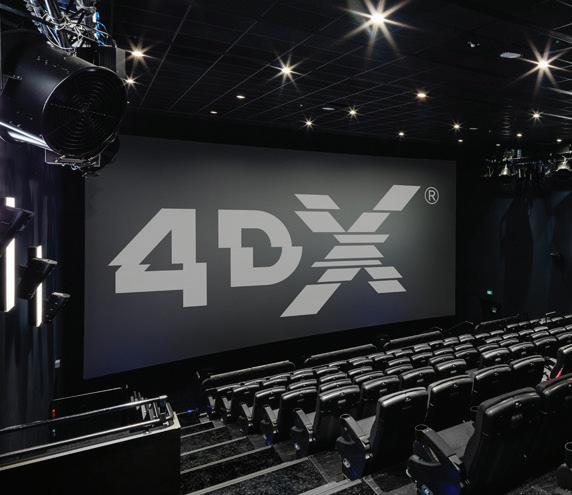

By Matthew Schmitz news2@thenorthernlight.org
In the modern world, surrendering privacy is the price of admission to surf the web and take advantage of free apps and programs.
Every search, every click, everything you look at online gets tracked.
That data is used to serve you content and get you coming back for more. Then it’s sold off to the highest bidder – who hopefully uses it for nothing more nefarious than selling you a pair of new shoes. It’s easy to imagine how this situation could spiral into something worse than the world described by George Orwell in his book “1984”.
Bringing this dystopian vision to life is UAA’s Pat Borjon, with his exhibit called “C” in the Hugh McPeck Gallery, running from June 16 to July 14. Borjon used his unique combination of artistic and programming skills to show us a reality that he says is largely already here.
The exhibit – which Nicole Pendleton, gallery manager of Hugh McPeck, said seemed to have a technological horror theme – tries to raise our awareness of this uncharted world using motion sensors, tv monitors, and paintings, many of which depict nebulous beings, whose lack – or excess – of focus hint at something mechanical and soulless.
From Borjon’s artist statement regarding the name of the exhibit: “C refers to the way we are seen by A.I., the way we think about being seen, and the way corporations see us through tracking technology like cookies, cameras and geo-coordinates.”
Borjon works in UAA’s Office of Admissions as the CRM Systems Administrator. He recently moved into the position, previously helping with IT support in the department for the past 17 years.
In an interview, Borjon said growing up he had an interest in art, taking classes at what was then called the King Career Center. He ended up studying electronic engineering and went to work for HP right out of college.
Working in IT, he’s had opportunities to exercise both his interests by designing the frontend graphical user interface
of programs he was helping to code.
He said the exhibit in Hugh McPeck is his first. He had wanted to set something up in the gallery before, but he thought it was only for students. He discovered that you don’t necessarily need to be a student to put on a show, and after submitting a proposal, he was approved.
“C” includes pieces in several different mediums, including posters, oil and digital paintings, and physical items.
One anxiety-inducing work consists of actual microphones hanging by their frayed wires – with printed words that say, “WHAT’S LEFT OF YOUR PRIVACY IS HANGING BY A,” attached with paperclips.
The most striking pieces are the flat screen monitors hooked up to Xbox Kinects.
Borjon said he found early models of Kinects at thrift stores for low prices. The motion sensors contain all the software and hardware to track human figures. The data produced by them can be used as an input into any program designed to take advantage of the information, not just an Xbox.
Teaching himself how to access and use the Kinect data, Borjon created computer programs to demonstrate what can be done with the motion sensors. He said two of the tools he uses to create his applications are Processing and Touchdesigner.
One of the TV monitors displays a physics simulator that lets you position a stream of falling particles by moving one hand and position a ramp to re-
direct the flow with your other. In another, a stick figure is generated on the screen that follows the position of your own body.
There was one piece that showed a live video produced by the Kinect. Users could adjust the size and depth of the pixels to create what looked like a 3D topographical map – turning a flat image into a three-dimensional one.
Pendleton said this piece was the one she found most captivating. She also said that this was the first time that the Hugh McPeck gallery had ever hosted an exhibit with interactive works using motion sensors and monitors.
The other pieces in his exhibit were more along the lines of typical two-dimensional works of art.
There were a few digital paintings that had what appeared to be faces formed out of swilling vapors.
One of them, called “You Are Not Alone, Wink Wink,” shows multiple eyes peering out from a black abyss. There are the names of past U.S. presidents scrawled out, with Google coming at the end of the list.
Speaking on the piece, Borjon said that when it comes to who is surveilling us, it’s not just the government we need to be worried about, and all this information is just as likely to be in the hands of a giant corporation.
He said he uses a program called Verve to make these paintings. He said the program lets you adjust the fluidity of the paints you are using, and this lets you flick and swirl the paint
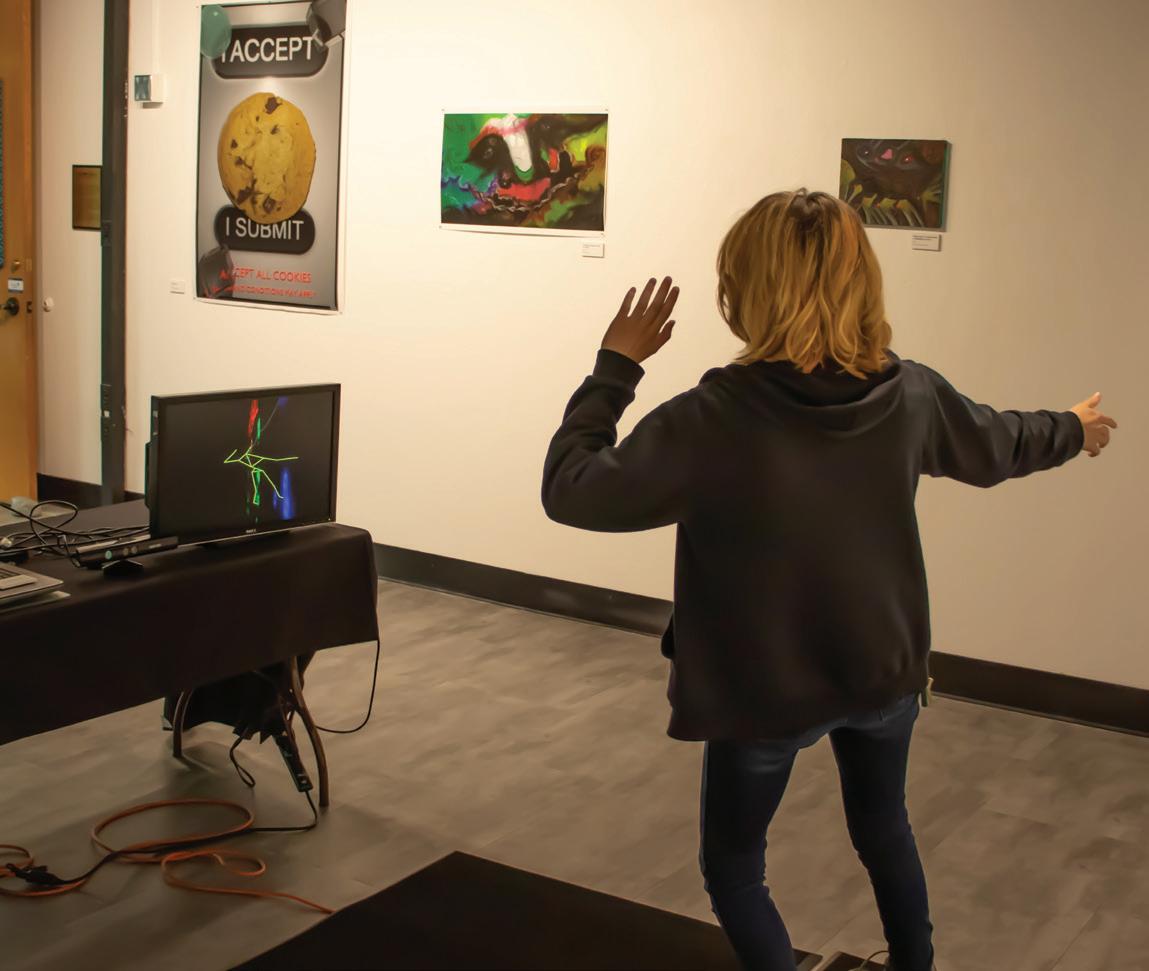
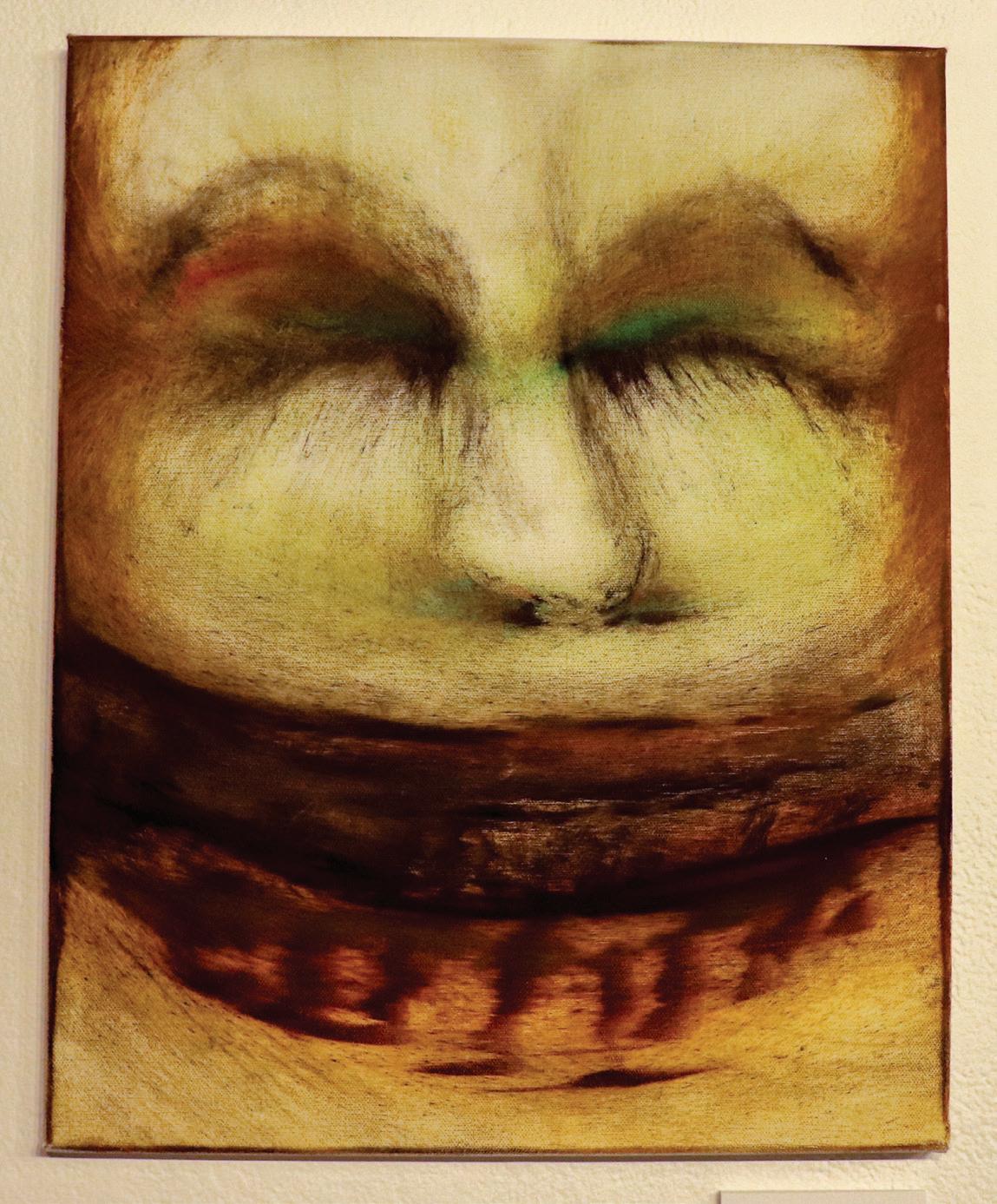
around.
He said that he works in an iterative process, where he makes strokes until he starts to see something, such as a face.
He then makes another stroke. If it contributes to the forming image, he keeps it. Otherwise, he will press undo and try again – over and over – until he gets something he likes.
Another of his digital paintings, “See No Evil, Raise a Child,” uses a popular painting program called Blender.
The image is a spin on the classic three-monkey piece of “Hear no evil, see no evil, speak no evil.”
In this case, there are chrome monkey heads with the traditional words – hear, speak and see – written above their heads. Under them reads, “KNOW EVIL,” followed by “Raise a Child.”
This piece gets at one of the important influences on his work: raising his daughters.
He talked about the contradictory struggle of wanting to shield and protect them from the dangers of the world, and the reality that they would need to experience some of its evils if they were ever going to grow up and take care of themselves.
The oil painting of a blurred face called “La La La, I Can Not Hear You” is also related to this dynamic. It’s based on his own daughter’s face when she shook her head, not wanting to listen to
his warning about some danger. There are a pair of posters in the exhibit that facetiously offer the “opportunity” to win 540 cookies – online trackers that companies use to watch your browsing and identify you.
Borjon said the inspiration for the posters came from an experiment he ran to see how many cookies he could get by visiting 6 popular websites in just 20 seconds. During that time he found that the websites had installed 540 cookies on his browser.
Borjon said he has enjoyed the experience of setting up the gallery.
One piece that he was hesitant to put up was an oil painting called “The Getter Becomes the Giver.” He was told by someone that good artwork should make some people angry, not everything should make people feel good.
The work depicts a face screaming at another and is meant to convey the cycle of someone who is abused, themselves becoming an abuser. It moved someone to share their own story of abuse with him.
He said that he would have never had that opportunity to hear their story without his work and that this has been one of the most impactful aspects of the exhibit to him, the conversations he’s been able to have, prompted by his art.

Cult of the Lamb - Do you have a moment to talk about our Lamb and savior?
By Jake Dye editor@thenorthernlight.org
Release Date: Aug. 11, 2022
Developer: Massive Monster
Platform: PC [Played], PlayStation 4 & 5, Xbox One, Xbox Series X|S, Nintendo Switch
After spending around five hours as the leader of my flock in Cult of the Lamb, I’m more than comfortable saying this is one of the most interesting titles releasing this year. Five hours puts me only around halfway through the game, but I’ve been charmed at every turn even as I’ve exploited cultists and led crusades against the old faith.
The game is sort of a fusion of wholesome city builder and thrilling rogue-like. Everything is painted with a curious lens of being a cute sheep who runs a vile cult in service of a monstrous demon imprisoned by the old faith.
Roguelike games, hugely popular and prolific in the indie scene, feature runs at randomly generated dungeons where different weapons and perks can be found to craft a character build
Those who played Animal
Crossing during the pandemic will likely find much familiar here. A lot of time is spent at the camp of your very own cult. You have to build resources by chopping down trees or mining rocks, then build structures and develop the community.
Unlike Animal Crossing, the residents of the camp are not your neighbors. They are your cattle.
New members are indoctrinated into the cult and set to the work of gathering resources, worshiping you at a shrine or tending farms. The health and mood of the cultists must be maintained to keep them working, but the game encourages their exploitation, up to the point of sacrificing them to further your own ambition.
Building and maintaining a cult is only half of the action, as the player is also called by their underworldly patron – The One Who Waits – to lead crusades against the four bishops of the old faith who chained them.
Each of the bishops lies in wait at the bottom of one of four dungeons, where the player performs a roguelike style run. A variety of weapons – each with different speeds and effects – are available, as well as a selection
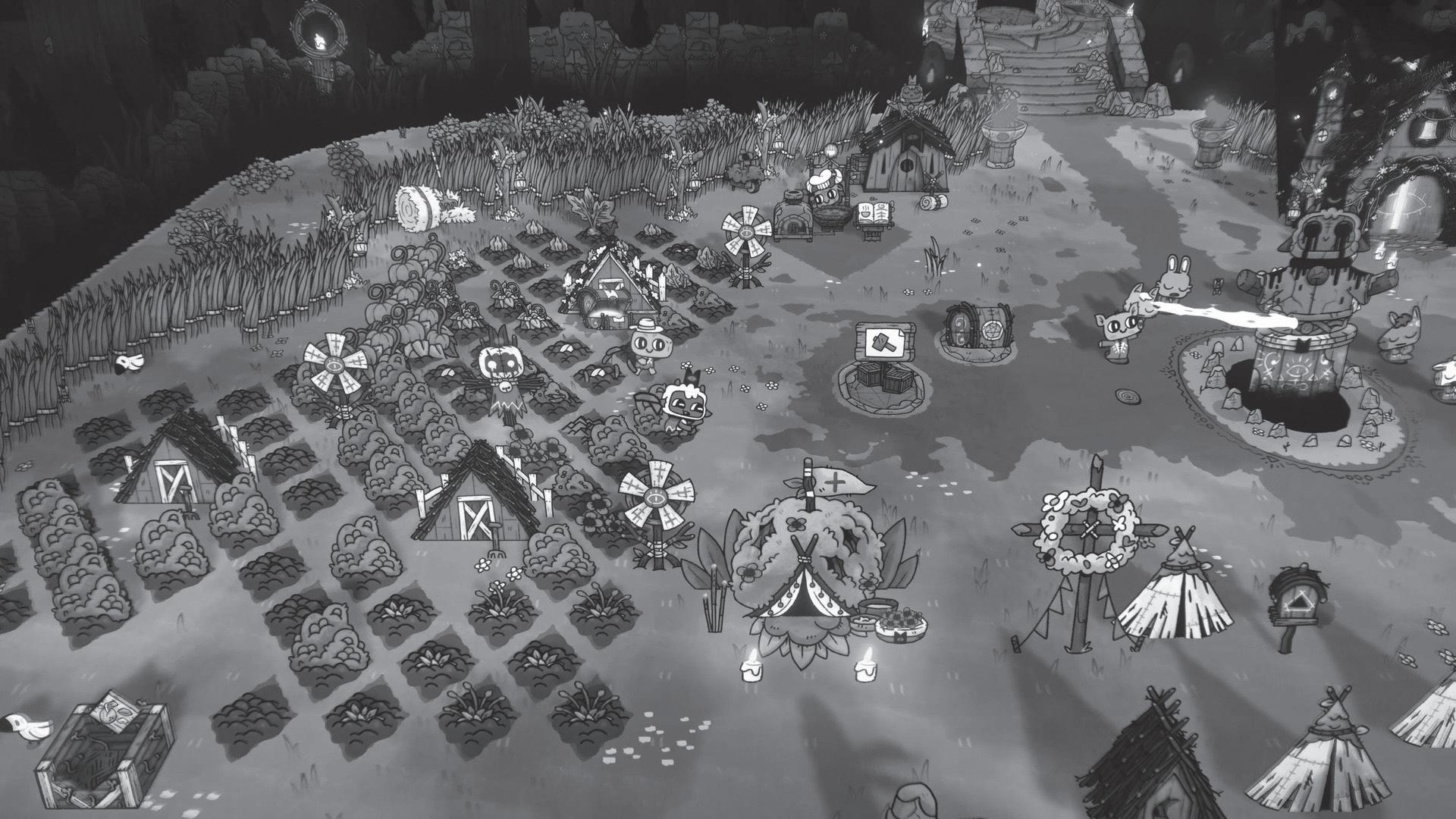
of spells to cast and tarot cards that give perks.
Even if the boss isn’t vanquished, other resources and rewards can be obtained. This is the primary method for acquiring additional cultists.
Cult of the Lamb does a remarkable job of balancing tons of interlocking systems without becoming overwhelming. Managing cultists, harvesting their faith and devotion as separate currencies, declaring new doc-

trines, building structures and managing materials; not to mention the entire combat system. Somehow it all works.
Perhaps the even more precarious balancing act is keeping the game cute, wholesome and, more importantly, tasteful when the subject matter pertains to developing a cult, leading crusades against heretics, sacrificing followers before feeding them to their peers and any number of other macabre exploits.
It’s still cute. The followers are charming, based on any number of animated woodland creatures. The sheep is a lovable protagonist even when brandishing a massive ax and summoning tentacles from below.
For me, at the time of writing, two of the bishops have been vanquished and I’m well on my way to challenging the third. I’ve found it pretty easy. My cultists stay happy and healthy, and I’ve cleared both of the big baddies on my first try.
Even if the game were harder for me, the game is built to constantly increase the players power. Building up the cult regularly increases the base power of the sheep, meaning that no roadblock should remain insurmountable for any player if
they’re willing to put in the time to keep growing their power and influence. I haven’t even unlocked the ability to summon allies in combat or sacrifice followers for an extra life.
There are difficulty options, which could make the game even easier or harder, but I really like the game as it is. This is a unique take on the wholesome game, crossing town building with tightly designed action. The cult theme is entirely unique and adds hilarious flavor to almost everything the player does.
I’d easily recommend this game to anyone who likes either simulation builders like Animal Crossing or action roguelikes like Hades. This is a great bridge from one genre to another, and due to its relatively low difficulty, I think it works well as a more introductory game for either genre.
Really, Cult of the Lamb is one of my favorite games this year because it’s a delightful surprise. I’ve never played anything like it, and it’s been a fun game to play as I wind down at the end of the night. I’m still actively progressing through it, and I definitely expect to play the game to completion.

By Jake Dye editor@thenorthernlight.org
After years away, UAA Hockey is finally returning to competition on Sept. 23. The team hitting the ice will not feature a single returning member from the team that last competed under the Seawolf banner, however. An entirely new team and coach were signed following the team’s cancellation, a two million dollar fundraising effort, and reinstatement.
Head Coach Matt Shasby said the unique circumstances surrounding the start of this season are just another challenge to be overcome. “For anybody who likes challenges, I don’t think you could ask for a better situation.”
He said that he’s built a team of athletes who understand the situation they’re coming into, “You present this challenge with every kid you talk to… ev-
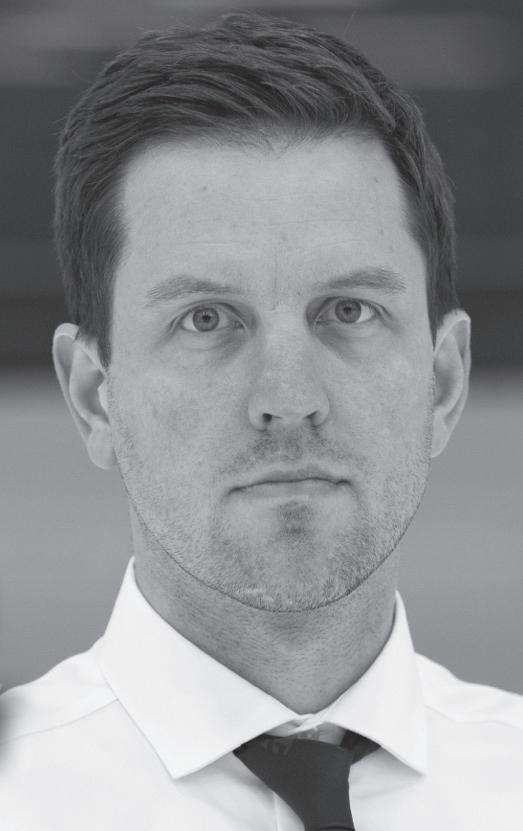
ery single kid, without batting an eye said yes,” Shasby said. “We’re gonna be a team that puts in an honest effort every single day and just try and get better every single day.”
The team will only have one month to prepare for their first exhibition, as players aren’t arriving in Anchorage until close to the start of the Fall Semester, Shasby said. The first day of practice isn’t scheduled until the first full week of September.
Shasby said that even though he hasn’t had the opportunity to see everyone together on the ice, he is excited about the team, which is comprised of a mixture of freshmen and transfers.
Adam Tisdale is a graduate student from Alberta, Canada. Shasby said he brings a skill set that will be applicable to multiple situations, capable of creating opportunities on the offensive end.
Ben Almquist comes from the University of Minnesota in Duluth, which Shasby described as one of the best teams in the country. Shasby expects him to be a leader in scoring.
Looking at the defense, Shasby said that Derek Hamelin and Brett Bamber will “be playing big minutes.” Bamber is a topfour defenseman from the Alberta Junior Hockey League, and Shasby said he will be capable of creating offense from the back end.
Shasby expects to heavily lean on the goalkeepers. He said that goalkeeper Joey Lamoreaux is someone who can “hopefully sneak some wins out for us, just from his performances alone.”
Also on goalkeeping duty is Nolan Kent, who previously played for Northern Michigan,

playing 30 of 34 games his sophomore year.
Alongside a fresh new team, the hockey program is investing significant money into a fresh new fan experience. Shasby said the team has secured approval to have up to 150 people standing down around the rink, and the team is in the process of installing a brand-new sound system. Also new this year is a student section where UAA students can “go and get rowdy.” In total, Shasby said around a quarter of a million dollars is being spent just on improving the viewing experience as the team returns to the Seawolf Sports Complex.
Shasby hopes that the stands will be packed when Hockey returns to the university. “The 600 seats are going to be full, we’re gonna see people packed down
around the bottom of the rink shoulder to shoulder,” he said.
“There’s a big generation of young hockey players and young hockey families that really don’t know what college hockey is, and what the Seawolves are and we’re excited to share our product with them.”
The Seawolves have a full schedule, opening with a set of home games on the weekends of Sep. 23 and Oct. 1. The team will see Arizona, New York, Maine, Boston, Northern Michigan and more. Shasby said, “our guys are getting an incredible experience, just the life experience of traveling all over the country.”
Right now, Shasby says he’s most excited about the home opener, “and then, I mean, really every game for us this first year is going to be just as exciting as
the next. The nerves are there and I can’t wait to get started.”
Alongside competitions, the UAA Hockey team will be making a concerted effort to connect with the wider student community. This effort begins with a picnic bringing free food to students early in the Fall Semester. Shasby said that people go to specific schools because they want to be “part of that environment, that culture and that community… We’re going to go above and beyond to make sure they feel like they’re a part of something that’s special and something that was a big part of their college experience.”
Reach reporter Jake Dye at editor@thenorthernlight.com
Days before the first game of the season, Christopher Green, head coach of the UAA Volleyball team, said there was still a lot to improve on
By Jake Dye editor@thenorthernlight.org
Despite this, the UAA women’s volleyball team handily defeated the Alumni team in their annual exhibition match, held Saturday, Aug. 13. The seawolves swept their predecessors in three victories; 25-19, 25-13 and 25-18. This performance was driven by seniors Eve Stephens and Ellen Floyd, according to the breakdown from Seawolf Athletics.
Green said the team this year has a good balance of returning experience and new players ready to contribute. He said that the exhibition match would be “a good test.”
Even before the exhibition, Green had his eyes on the first school the team was challenging; Hawaii Pacific University in Honolulu. “We take each match one at a time, so our first match against HPU is the most exciting for me right now,” Green said Those matches in Hawaii
were indeed exciting, as the Seawolf Volleyball team brought home three consecutive sweeps after a weekend of competition.
Hawaii Pacific and Hawaii Hilo both fell in The Shark Tank, while Chaminade was defeated at McCabe Gymnasium, also in Honolulu. All three sweeps happened within a single 24-hour period, according to Seawolf Athletics.
The weekend of Campus Kickoff, UAA will be hosting teams from Georgia, California, Texas, Fairbanks and Pennsylvania for the Seawolf Invitational. During the event, which runs from Thursday, Aug. 25 to Saturday, Aug. 27, games will be played almost constantly at the Alaska Airlines Center. There are five games scheduled for both Friday and Saturday.
Seawolves will be competing against Lubbock Christian at 7 p.m. Thursday, Emmanuel at 9:30 a.m. Friday, Point Loma at 7:30 p.m. Friday, and Pittsburg State at 7 p.m. Saturday.
Green said the tournament “will be a big challenge for our
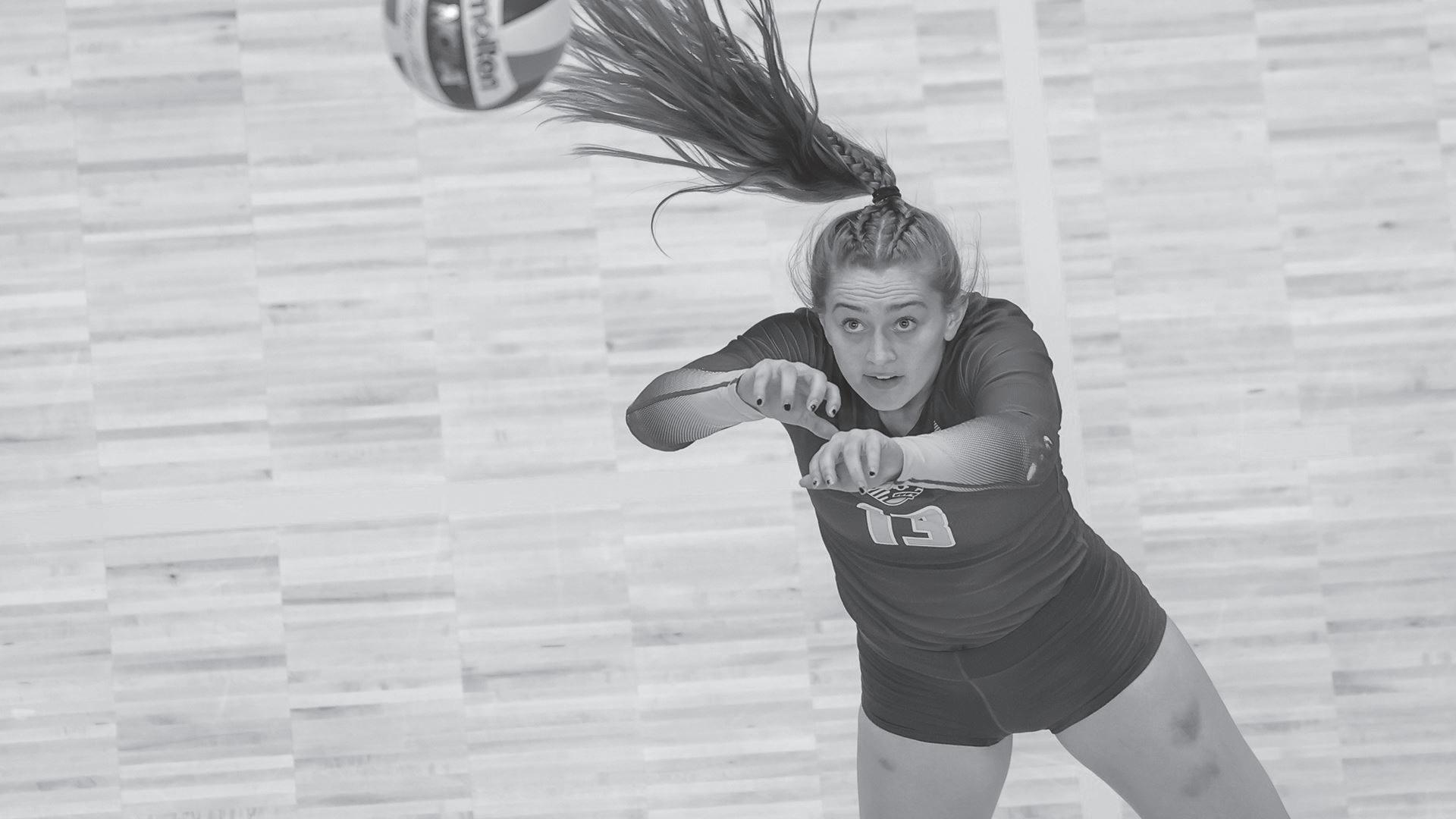
team.” He hopes to see UAA well represented in the stands.”I think all the athletic teams bring a sense of pride and unity to our campus.” He especially wants to see the young female athletes in the wider Anchorage community come out and experience the
team, hoping they’ll “find inspiration in our volleyball players.”
Home games are held in the Alaska Airlines Center, and Green wants to remind UAA students they get in free with their wolf cards. The team is looking to “pack the house” dur-
ing their Nov. 12 game against Central Washington, in an attempt to break the NCAA attendance record.
More information about the volleyball team, their roster and their schedule can be found at goseawolves.com
By Matthew Schmitz news2@thenorthernlight.org
The annual Alaska Distance Classic, hosted by Skinny Raven, was held Aug. 6 at the Alaska Pacific University campus. The event consisted of a 5K and 10K race, with an option for runners to do both.
The courses started and ended on the APU hill, making a loop through the heart of UAA’s campus. Several roads around the university, including Elmore, were shut down for the event.
According to Skinny Raven’s website, the race is one of the oldest in Alaska, dating back to the 1980s.
In an email, Mark Iverson with Skinny Raven wrote that some of the registration proceeds would go to support Special Olympics Alaska with 100% of donations being passed along to the organization.
According to the race results, over 400 people ran the 5K, 265 participants completed the 10K, and 186 opted to do both.
The path of the 5K route headed down the APU hill and went along Providence Drive, taking a right on UAA Drive before looping around Goose Lake, sending runners back toward APU following a path between the Fine Arts Building and the ConocoPhillips Integrated Science Building.
The 10K followed a similar route to the 5K but broke off at Goose Lake, going along Northern Lights Bou-

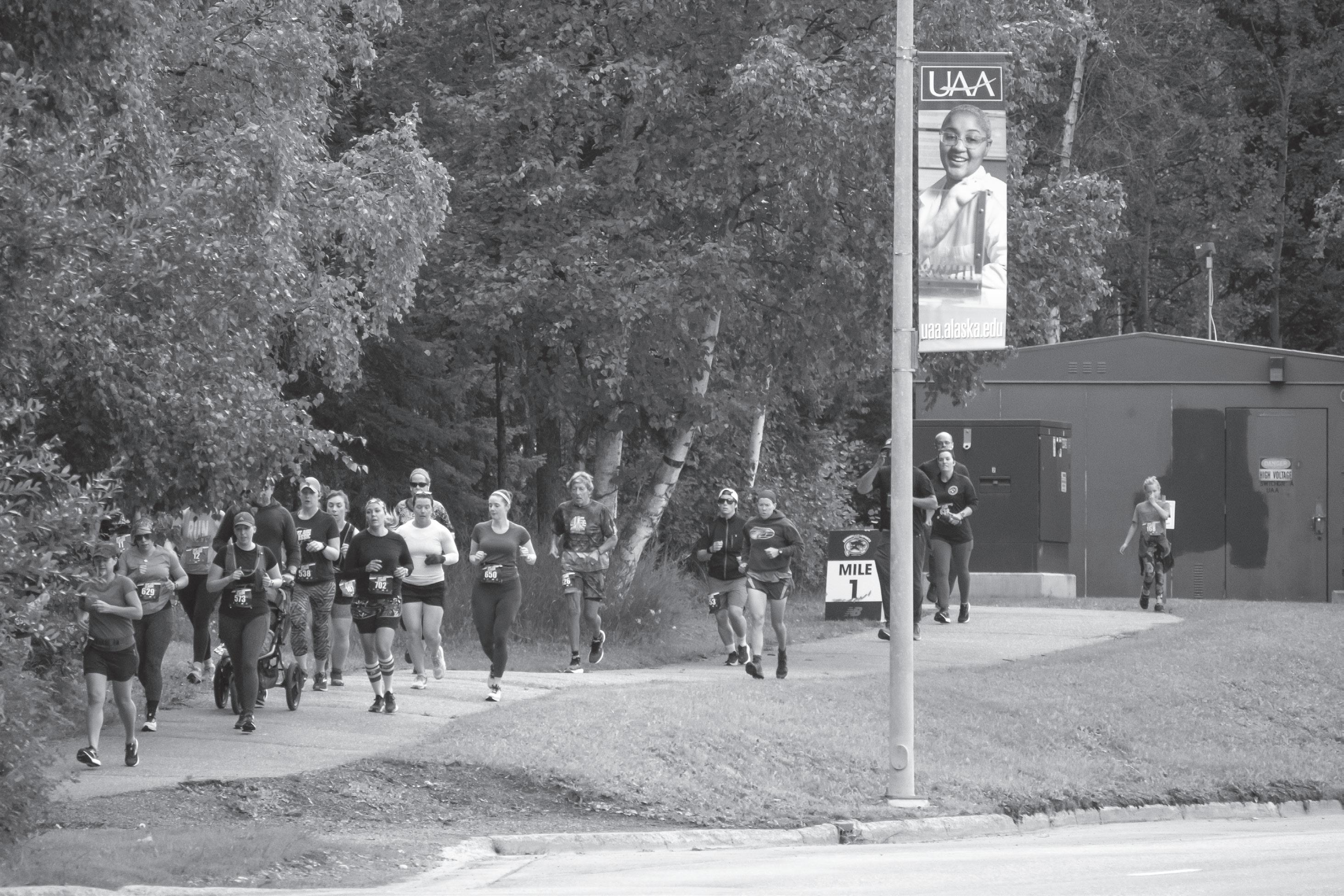

levard and following the University Lake Trail back to campus.
The fastest time for the 10K this year went to Christopher Osiensky, completing the course in 33:18.
Krista Inscho was the fastest female, with a time of 42:49, coming in 12th place overall.
The fastest time ever for the Classic, according to Skinny Raven’s website, went to Don Clary in 1987 with a time of 28:35, beating Alberto Salazar, who still holds the 2nd-place record of 29:26 set in 1986.
According to Iverson, Skinny Raven has been hosting the event since 2013 and providing timing services since the year before. Iverson wrote that the course used to go from APU to the Park Strip before they started doing the loop route so that runners could double up.
The top five men for the 10K were Christopher Osiensky at 33:18, Jared Gardiner at 34:10, Owen Marcotte at 36:31, Hunter Aman at 39:05 and Jason Lamoreaux at 39:18.
The top five females in the 10K were Krista Inscho at 42:49, Michelle Isaev at 43:57, Angie Anderson at 44:23, F. Selvik at 45:51 and Lindy Henrick at 46:12.
Results for this year’s race can be found on Skinny Raven’s website.

In the Aug. 2 edition of The Northern Light it was incorrectly reported under “Who’s in charge around here?” by Matthew Schmitz that the UA Board of Regents is composed of 9 people and that the position under college deans is called “vice dean.” There are actually 11 members on the UA Board of Regents and the position under the dean is called an “associate dean.” Also, an associate professor can achieve tenure without being a full professor. Thanks to Associate Dean Terry Nelson and USUAA Vice President Shanone Tejada for pointing out these errors. The Northern Light regrets the error.
3211 Providence Drive
Student Union 113 Anchorage, AK 99508
Executive Editor
Jake Dye (907) 786-1313 editor@thenorthernlight.org
Multimedia Editor David Harding media@thenorthernlight.org
News Reporter
Matthew Schmitz news2@thenorthernlight.org
News Reporter
Gabriel Blanco news3@thenorthernlight.org
Arts & Entertainment Reporter
Dylan Flos arts1@thenorthernlight.org
Media Adviser Paola Banchero
Administrative Adviser Zac Clark
Fiscal Technician Sarah Holland

The Northern Light is a proud member of the Associated Collegiate Press. The Northern Light is a weekly UAA publication funded by student fees and advertising sales. The editors and writers of The Northern Light are solely responsible for its contents. Circulation is 2,500. The University of Alaska Anchorage provides equal education and employment opportunities for all, regardless of race, color, religion, national origin, age, sex, Vietnam-era or disabled-veteran status, physical or mental disability, changes in marital status, pregnancy or parenthood. The views expressed in the opinion section do not necessarily reflect the views of UAA or the Northern Light.
The University of Alaska is an affirmative action/equal opportunity employer and educational institution. The University of Alaska does not discriminate on the basis of race, religion, color, national origin, citizenship, age, sex, physical or mental disability, status as a protected veteran, marital status, changes in marital status, pregnancy, childbirth or related medical conditions, parenthood, sexual orientation, gender identity, political affiliation or belief, genetic information, or other legally protected status. The University’s commitment to nondiscrimination, including against sex discrimination, applies to students, employees, and applicants for admission and employment. Contact information, applicable laws, and complaint procedures are included on UA’s statement of nondiscrimination available at www.alaska.
The Northern Light encourages readers to express their views in the newspaper. The Northern Light reserves the right to reject or publish any submission, online or in print.
Letters to the editor can be submitted to editor@thenorthernlight.org. The maximum length for a letter to the editor is 250 words, and 150 words for letters specifically endorsing candidates for federal, local, or university office. A letter to the editor is written by someone who does not have authoritative knowledge on the subject they are discussing. Contributors are restricted to one published letter to the editor per month.
The Northern Light is hiring! See our job listings at careers.alaska.edu.
Opinion pieces can be submitted to editor@thenorthernlight.org. The maximum length for a contributor’s opinion piece is 450 words. Contributors are restricted to one published opinion piece per month. Opinion pieces written by staff of The Northern Light are limited to 800 words. An opinion piece that is published in The Northern Light should be written by someone who has authoritative knowledge on the subject they are discussing.
Letters and opinion pieces are subject to editing for grammar, accuracy, length and clarity. All letters and opinion pieces must include names, major and/or group affiliation and contact information for verification purposes. The Northern Light will not publish anonymous letters or pseudonyms. Requests for corrections can be sent to editor@thenorthernlight.org. Print publication is subject to accuracy and available space. All corrections are posted online with the original story at www. thenorthernlight.org. The deadline for submissions is the Friday before publication at noon, no exceptions.

